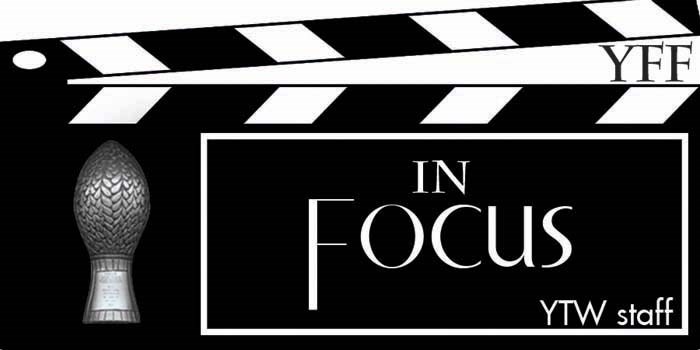Perhaps no single artist’s name is linked more in the public imagination to the National Film Board than Norman McLaren.
McLaren was an industry visionary, who pioneered numerous techniques of film and sound including hand-drawn animation, drawn-on-film animation, visual music, abstract film, pixilation and graphical sound.
He is probably best known for the movie Neighbours, a 1952 anti-war pic in which he used two live actors as stop-action animation figures. In a poignant exploration of the insanity of conflict, the neighbours end up fighting, to the death it turns out, over a flower growing on the line between their properties.
The soundtrack was etched directly onto the film, one of the experimental techniques McLaren became known for. Neighbours won the Academy Award for Best Documentary, Short Subjects in 1953.
In 1983, his last active year in the NFB, McLaren teamed up with long-time collaborator Maurice Blackburn, a Montreal composer, conductor and sound editor to create a visually stunning film called Narcissus. It is an interpretation, done entirely in ballet, of the Greek myth in which a youth’s self-love is his ultimate undoing with music by Blackburn.
While the myth is obviously a cautionary tale, the NFB film is a sensual celebration of the human form and was not the first time McLaren had done such a ground-breaking work.
His 1967 Pas de Deux and Ballet Adagio (1971) portray similar eroticism, but it was only with Narcissus that McLaren was finally able to realize a long-standing dream of portraying gay male sexuality on celluloid.
The three-part narrative includes erotic encounters with first a female and then male partner before the youth discards both in favour of his autophilia.
At that time, Narcissus was not without controversy, but that did not stop the Yorkton Film Festival from screening it and ultimately awarding it the Golden Sheaf Award for Best Experimental Production at the 1984 festival.
There is very little to say in actual review of the 22-minute movie except that it is beautiful and mesmerizing.
The dancers, in minimalist, light and neutral-coloured costumes seem to float on an entirely black background, which accentuates the fluidity of the movements as if they are perhaps flying.
McLaren’s adept use of framing also adds a dreamy quality to the work, which draws the viewer into its intense symbolism.
The NFB has a breath-taking collection of its catalogue available for viewing online, including Narcissus and 32 other Norman McLaren gems.



